- Summertime is Summer Tire Check Time: 7 Tips To Combat 11,000+ Tire-Related Accidents Annually — and Keep Tires Rolling for Longer
- 10 DIY Tips to Add Years to a Vehicle’s Life & Minimize Expensive Repairs
- Defensive Driving Tips to Avoid Costly Repairs As Wintery Driving Conditions Continue to Plague Roads
- AutoPartsWarehouse.com 2013 Child Passenger Safety Tips and Resource Guide
- Top Five Parts to Make Your Vehicle More Fuel Efficient
Summertime is Summer Tire Check Time: 7 Tips To Combat 11,000+ Tire-Related Accidents Annually — and Keep Tires Rolling for Longer
U.S. drivers put almost 3 billion miles on their tires a year and summer conditions can increase accident risk; for National Tire Safety Month AutoPartsWarehouse.com offers important tips for tire safety and longevity
Carson, CA – June 04, 2014 – Tire failures cause over 11,000 tire related accidents every year, according to the National Highway Traffic Safety Administration (NHTSA) — and, hot summer roads and poor tire maintenance can make tires even more vulnerable. Even something as simple as keeping tires properly inflated can be a life-safer so, as summer driving season begins, and to help raise awareness of the importance of tire maintenance during National Tire Safety Month, the experts at AutoPartsWarehouse.com have put together an easy to accomplish tire check list.
Consider this data from NHTSA [1]:
- Drivers in the United States put more than 2,969 billion miles on their tires annually
- There are nearly 11,000 tire-related crashes annually
- Almost 200 people will die in those crashes.
- Vehicles driving on tires underinflated by more than 25 percent are three times more likely to be involved in a crash related to tire problems than vehicles with proper inflation.
“There are few vehicle maintenance jobs that are easier than tire maintenance, but many of us forget how very important it is to our safety on the roads – the statistics from NHTSA are sobering and should serve as a reminder to all of us to take a few minutes to check our tread and our tire pressure,” said AutoPartsWarehouse.com CEO Shane Evangelist. “And while safety is the number one issue, good tire maintenance is also a dollar issue: properly maintained tires can increase gas mileage by 3.3% [2]; and, with new tires costing $50 to $250 per tire (or more) it is important to make sure they last their full life.”
AutoPartsWarehouse.com Tire Tip Check List
1. Inflation, Inflation, Inflation
There is probably no more important, nor easier, vehicle safety and maintenance tip than simply keeping your tires properly inflated. Underinflated tires are more likely to be involved in an accident and even slightly under inflated tires (up to 25%) can adversely affect vehicle handling and tread life. [3]
Step 1: Know what your vehicle’s recommended tire pressure in pounds-per-square-inch (PSI) should be. Correct tire pressure for your vehicle can be found on the sticker inside the car door and in the owner’s manual.
Step 2: Buy a tire pressure gauge.
Step 3: Take five minutes once a month to check your tire pressure (including the spare) and if it is low, inflate to the proper PSI.
On vehicles equipped with a Tire Pressure Monitoring System (TPMS), a warning light on the dashboard signals when a tire is low. And frequent visual inspections are a good habit to get into: look for bulging sidewalls, which could indicate low tire pressure.
2. Penny for Your Tires – Check Tread Frequently
Tire-related crashes, according to a NHTSA study [4], are more likely as tire tread wears, with accident rates at 26 percent when tires are worn-out (0 – 2 /32″ depth). Visual indicators of tread wear include raised sections spaced throughout the bottom of tread grooves; but perhaps the best known test is to place a penny in the tire tread with Lincoln’s head upside down and facing out. If the top of Lincoln’s head is visible, the tire has less than 2/32 of an inch and must be replaced.
3. Align Your Priorities
If your wheels aren’t aligned correctly you are accelerating uneven wear and could be adversely affecting vehicle handling. Wheel alignment can be checked by simply looking at the wear pattern on tires or by a trained technician with the use of an alignment rack.
Rotating and balancing tires every other oil change (7,000 – 10,000 miles) is another good tire habit. Rotating increases tire lifespan because the front tires wear faster than the rear, and keeping the tires balanced reduces vibration, extends the life of related suspension components, and improves the ride.
4. Replace Replace Replace
They are tires, not wine and if they are over six years-old, it is probably time to look for new shoes. And don’t let the tread get to the point where it fails the penny test, replace a tire before it gets dangerous. Most manufacturers agree that regardless of mileage, quality tires have a shelf life. Check your vehicle owner’s manual for specific recommendations for tire replacement for your vehicle. Some vehicle manufacturers recommend six years, some tire manufacturers recommend 10 years as the maximum service life for tires, including spares, but make sure you visually check tread frequently, as weather, poor maintenance, bad driving habits and other factors can shorten tire life.
5. Mellow Your Motoring
Driving habits have a significant impact on tire life – and, of course, safety. Take it easy on stoplight launches and canyon carving and watch your speed when driving on rough or damaged roads. Hitting a pothole at forty miles per hour can cause tire and wheel trauma, including sidewall damage, which is non-repairable
6. Keep Them Clean
Use a tire protectant to prevent UV or ozone damage in the summer and harsh weather conditions in the winter. Be sure to clean tire sidewalls with Armor All® or a similar product. Whenever your vehicle is stored for long periods of time (i.e., a trailer or classic car), cover your tires and remove the vehicle’s weight or load to help prevent sidewall cracks from forming.
7. Keep Calm and Pull Over
If you lose pressure or have a blow out when driving at speed, look ahead for a safe place to pull out of traffic, gently steer your vehicle there and avoid major corrections while you carefully slow down. If your car is on Run Flat Tires (look for RFT on the side wall) drive below 50 MPH to the nearest shop for repair and remember that most Run Flats have a range of around 100 miles or less when deflated.
Always consult your vehicle owner’s manual and tire documentation before you replace or service your tires.
Download Printable PDF Version
Sources: NHTSA (www.nhtsa.gov); AutoMD.com (www.automd.com); AutoPartsWarehouse.com (www.Autopartswarehouse.com), Consumer Reports
About AutoPartsWarehouse.com
Established in 1995, AutoPartsWarehouse.com is one of the nation’s top online auto parts and accessories retailers and is dedicated to making it easy for consumers to save money by accessing auto parts online. AutoPartsWarehouse.com offers a comprehensive catalogue of over 2 million auto parts and accessories, to fit all domestic and foreign makes from top aftermarket manufacturers. AutoPartsWarehouse.com offers consumers free shipping on orders over $50 as well as flexible payment and extended warranty plans and options. The company has parts warehouses in markets throughout the U.S. enabling rapid shipping of parts. AutoPartsWarehouse is operated by U.S. Auto Parts Network, Inc., (Nasdaq: PRTS).
Contact:
Melanie Webber, mWEBB Communications, (424) 603-4340, melanie@mwebbcom.com
1 http://www.safercar.gov/tires/index.html
2 http://www.nhtsa.gov
3 http://www.consumerreports.org/cro/news/2012/05/nhtsa-study-finds-underinflated-and-worn-tires-increase-the-likelihood-of-a-crash/index.htm
4 http://www-nrd.nhtsa.dot.gov/Pubs/811617.pdf







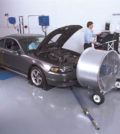
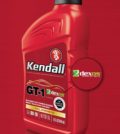

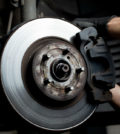


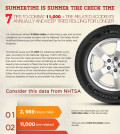
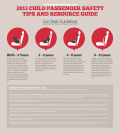

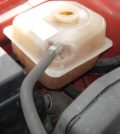
Pingback: Summertime is Summer Tire Check Time: 7 Tips To Combat 11,000+ Tire-Related Accidents Annually — and Keep Tires Rolling for Longer | Vintage Womens Shoes()
Pingback: Summertime is Summer Tire Check Time: 7 Tips To Combat 11,000+ Tire-Related Accidents Annually -- and Keep Tires Rolling for Longer - Frank Lamark, Frank M. Lamark, Frank Michael Lamark | Frank Lamark, Frank M. Lamark, Frank Michael Lamark()
Pingback: Summertime is Summer Tire Check Time: 7 Tips To Combat 11,000+ Tire-Related Accidents Annually — and Keep Tires Rolling for Longer | Blessed Today()
Pingback: Summertime is Summer Tire Check Time: 7 Tips To Combat 11,000+ Tire-Related Accidents Annually — and Keep Tires Rolling for Longer | NewsTribune.Asia()